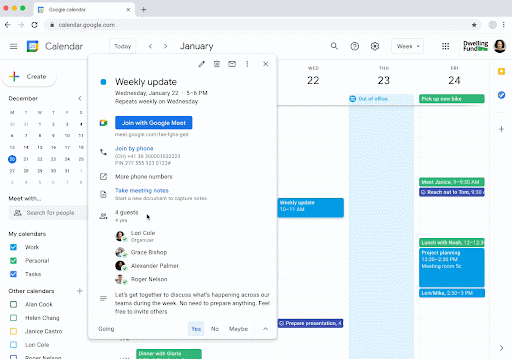Stop the Zoom recordings already!
Summary
Sending a meeting recording in lieu of meeting minutes is not just inefficient, it’s also insensitive. Do better.
Summaries are shorter than recordings and just a few minutes to read.
Video recordings are hard to search and difficult to relate to other items we're working on.
Meeting notes needn’t be cumbersome. Summaries should focus on discussion topics, salient points, what you’ve decided and the next actions.
(A version of this post originally appeared on my LinkedIn feed)
Let me begin with a health warning. I enjoy a good rant and this post might seem like one. I have a problem with Zoom recordings. Or recordings from any other platform. I think the recording feature is great, but I worry when people use it as an excuse for poor meeting etiquette.
The "good old days" of meetings
In the past, when someone couldn't attend a meeting, one of us would take notes and circulate a summary. This summary would be much shorter than the actual meeting, often taking less than five minutes to read. This was an efficient way for those who couldn't attend to stay informed.
Enter Zoom (Meet/ Teams) recordings
Video conferencing tools have made meetings much easier in the last few years. With the pandemic, meetings have become even simpler. However, with the recording feature, people seem to have stopped taking notes and circulating minutes. "Just circulate the recording instead" has become the go-to.
Although I think recordings have their uses, sending them instead of minutes is a bad habit for distributed work. Here are a few reasons:
People don't always attend certain meetings for a reason. To ask them to spend the same time as they would have spent attending the actual meeting ignores this.
Most meetings have outcomes that anyone can consume in a short time. Making everyone spend the same time you took to get to your outcomes is inefficient. Save your colleagues time.
Video, even with closed captions, is not searchable and is difficult to relate to other items we're working on (e.g. JIRA tickets, Confluence pages). Text summaries can bring together all these pieces of information and provide context and consistency. Writing, as we’ve discussed, is the biggest remote working superpower.
Please remember this. People's time is a zero-sum game. Watching a recording likely means something else doesn't receive the time it deserves.
Meeting notes needn’t be cumbersome

I’ve waxed lyrical about the value of meeting notes in a previous blog post about audit trails for async-first work. In the meetings that I run, my notes are ready before the meeting finishes. It’s easy. You can do it too.
Use functionality built into your collaboration suite. Notion has its templates. As does the Microsoft suite. I use Workspace by Google and it builds in a nudge to take notes, right inside the calendar event. I just use the built-in template, most times.
Focus only on the takeaways. All that people care about after the fact are three things.
The topics of discussion.
Any salient points you discussed.
What you’ve decided and what’s the next action.
People trip themselves up trying to type everything that people are saying in a meeting. This is a laudable, but pointless exercise. Most people can’t type fast and keep up with a conversation at the same time. Be easy on yourself. Don’t be a superhero. Write only what you’re likely to remember two weeks from now.
If you don’t have minutes, you should have another artefact. For example, if two people meet to write up a decision record together, that’s the artefact. If you run a design meeting, then design sketches or wireframes are the artefact. Circulate these artefacts with enough context that people can understand them without you around.
You can do all this even more efficiently with the right tooling. Software like Otter, or tl;dv can make it simple to document meetings. But even if you don’t have access to these tools, you can surely be considerate to your coworkers and follow the simple advice I’ve outlined above.
We must make our colleagues' work lives more efficient and enjoyable. Everyone can't possibly attend every meeting. Sending zoom recordings without written summaries assumes we have infinite time to watch endless videos. That's not true, is it?
So please, write those meeting summaries. Connect them to whatever else you may reference — JIRA issues, Google docs, commits, pull requests, branches - what not. Help everyone save those precious work hours! Your colleagues will thank you for it.

